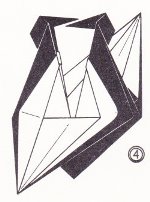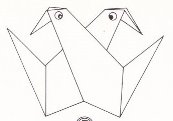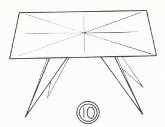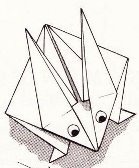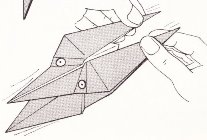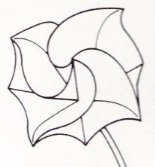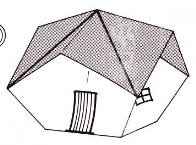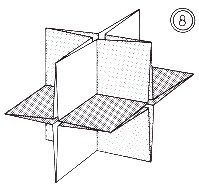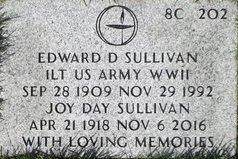| The Public Paperfolding History Project
x |
|||||||
| The Paperfolding of E D Sullivan | |||||||
Introduction Edward D Sullivan (usually known as Ed Sullivan or E D Sullivan) was born in Brooklyn on 28th September 1909 and died in Angle Lake, Washington on 29th November 1992 aged 83. (see entry for 2002). ********** Chronology 1909 Edward D Sullivan (usually known as Ed Sullivan or E D Sullivan) was born on 28th September 1909. ********** 1963 'The Best of Origami' by Samuel Randlett, which was published by E P Dutton in New York in 1963 and by Faber and Faber Ltd in London in 1964, contained the following biographical details:
And diagrams for a number of Sullivan's original designs: Kissing Penguins
********** Togetherness
********** Table
********** 1964 'Secrets of Origami', by Robert Harbin, which was published by Oldbourne Book Company in London in 1964, contained diagrams for two of Sullivan's designs: Pop-Up Rabbit
********** Scissorbill
********** 1974 Sullivan's 'Chinese Waterlily' (Cut) (modular) appeared in Issue 21 of the 'Flapping Bird':
********** Sullivan's 'Spiral Bud' and 'Japanese House' appeared in Issue 22 of the 'Flapping Bird':
********** 1976 Sullivan's 'XYZ' 6-part modular) appeared in Issue 25 of the 'Flapping Bird':
********** 2002 Sullivan died in Seattle on 29th November 1992 aged 83. The Seattle Times carried an obituary referring to his passion for origami which can be found here. It contains, inter alia, the following information: Mr. Sullivan was born in Brooklyn and raised in Freeport, N.Y., where he graduated from high school in the late 1920s. He left home and traveled around the country during the Depression, finding work where he could. While in Texas, Mr. Sullivan attended art school and sold advertising for a newspaper. He also received technical training at Bell Laboratories in New Jersey. He was drafted into the Army in 1941 at 32 and served until 1945. While in the South Pacific, he read origami books and learned to fold by following the diagrams and pictures. In 1943, Mr. Sullivan met Joy Day of Okanogan while on his way to an Army electronics school in Florida. Four weeks later, they married. After the war ended, the Sullivans lived briefly in Seattle before moving to Liberty Lake, just outside Spokane, where Mr. Sullivan sold advertising. The couple moved to Seattle in the 1950s and in 1961, Mr. Sullivan went to work as a technician for The Boeing Co., where he worked 18 years before retiring. Mr. Sullivan joined Friends of the Origami Center in the late 1960s. From the club, Mr. Sullivan exchanged origami ideas and folds with other fans of the craft. In 1986, Mr. Sullivan won an international origami contest in France. His most famous creation, often shown in books, was a castle made from a series of block folds that could be joined to add more rooms. ********** An obituary, containing similar information, but noting that he died in Angle Lake, Washington, also appeared in The Newsletter for the Friends of the Origami Center of America, Issue 43 of Winter/Spring 1993. ********** Sullivan was buried in Tahoma National Cemetery in Washington. (Edward D Sullivan (1909-1992) - Find a Grave Memorial)
********** |
|||||||


